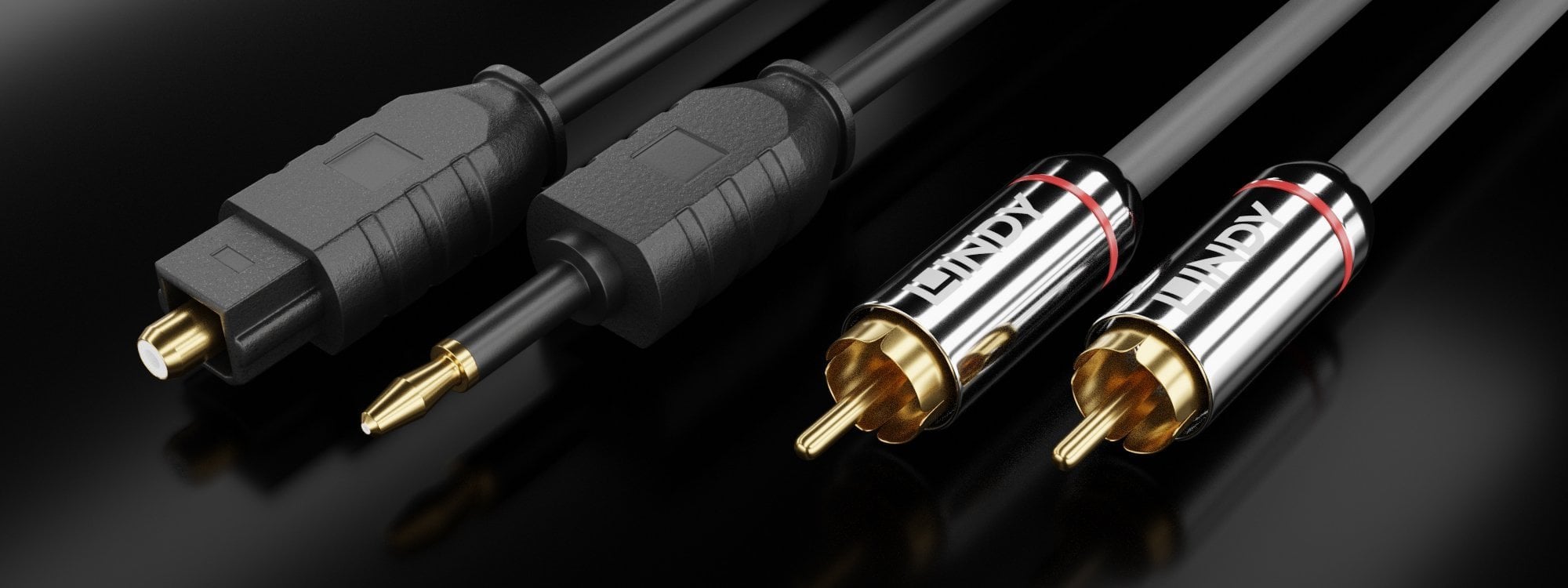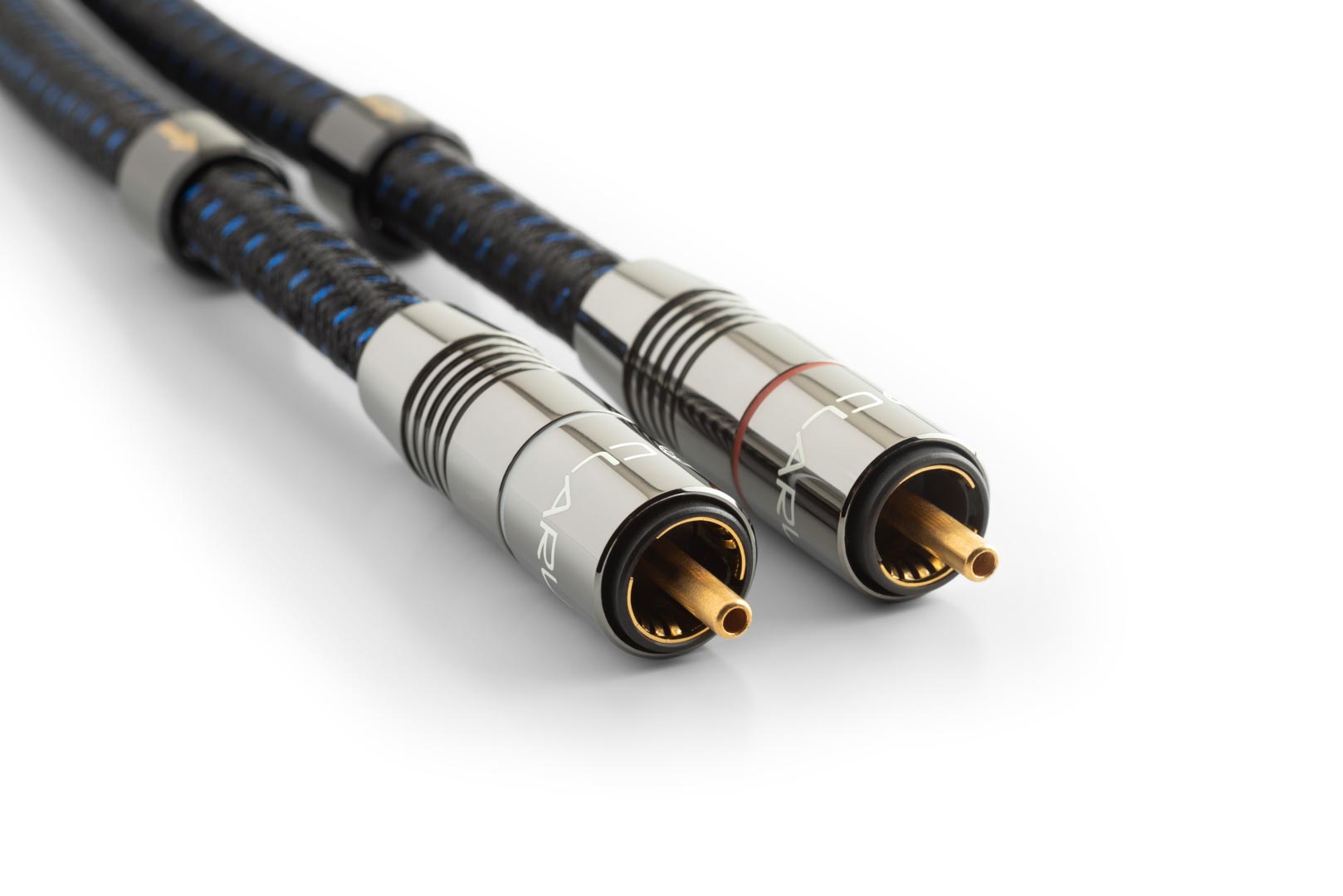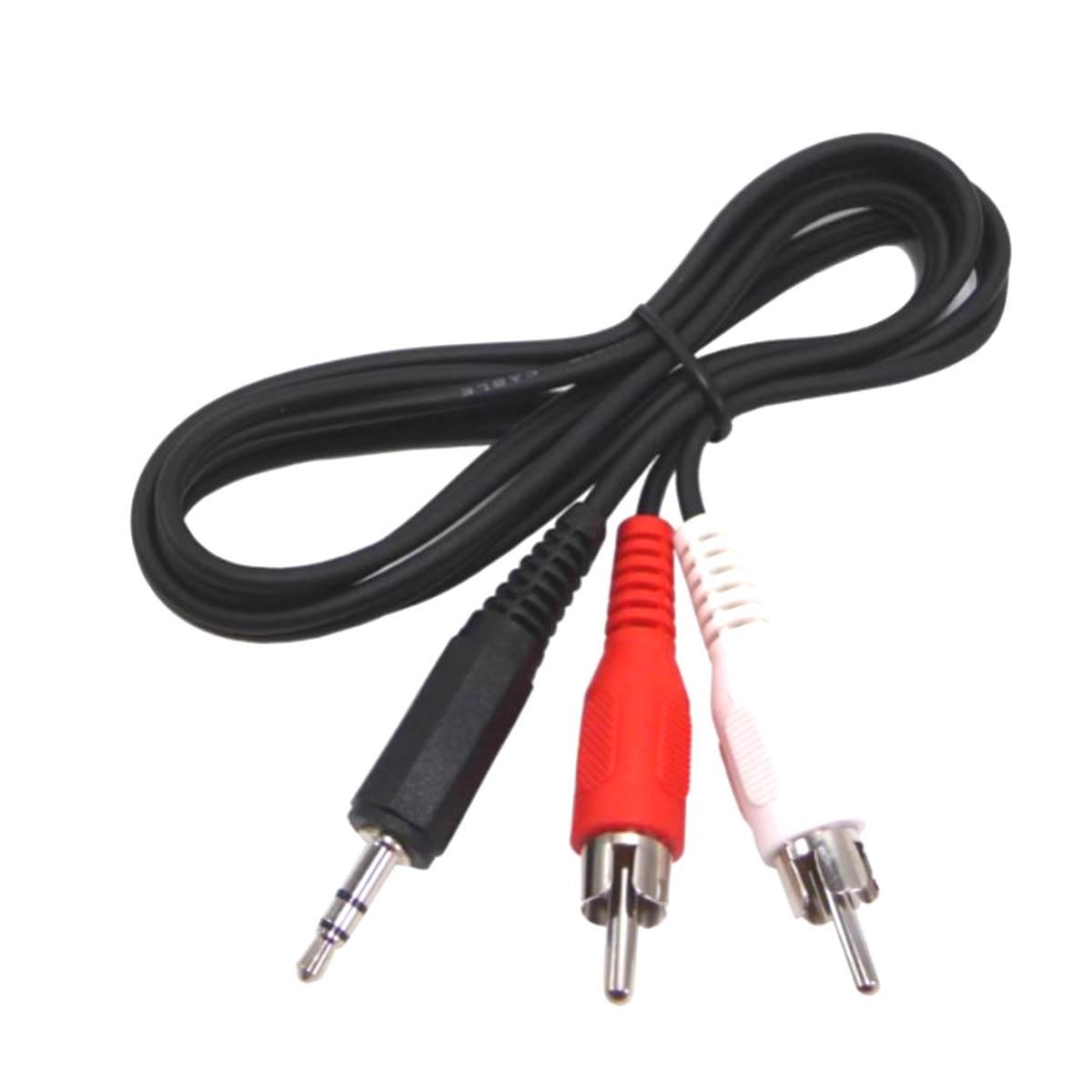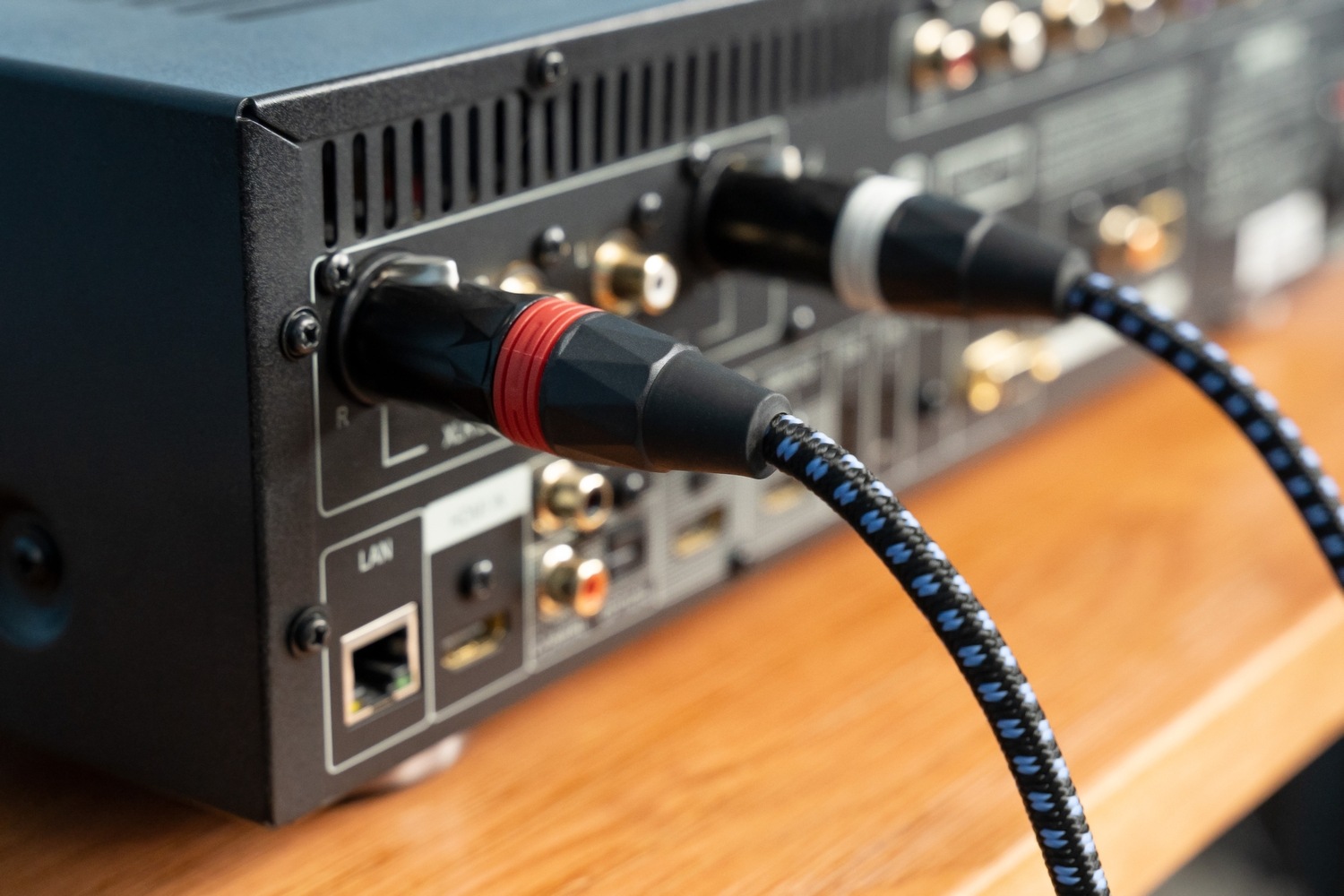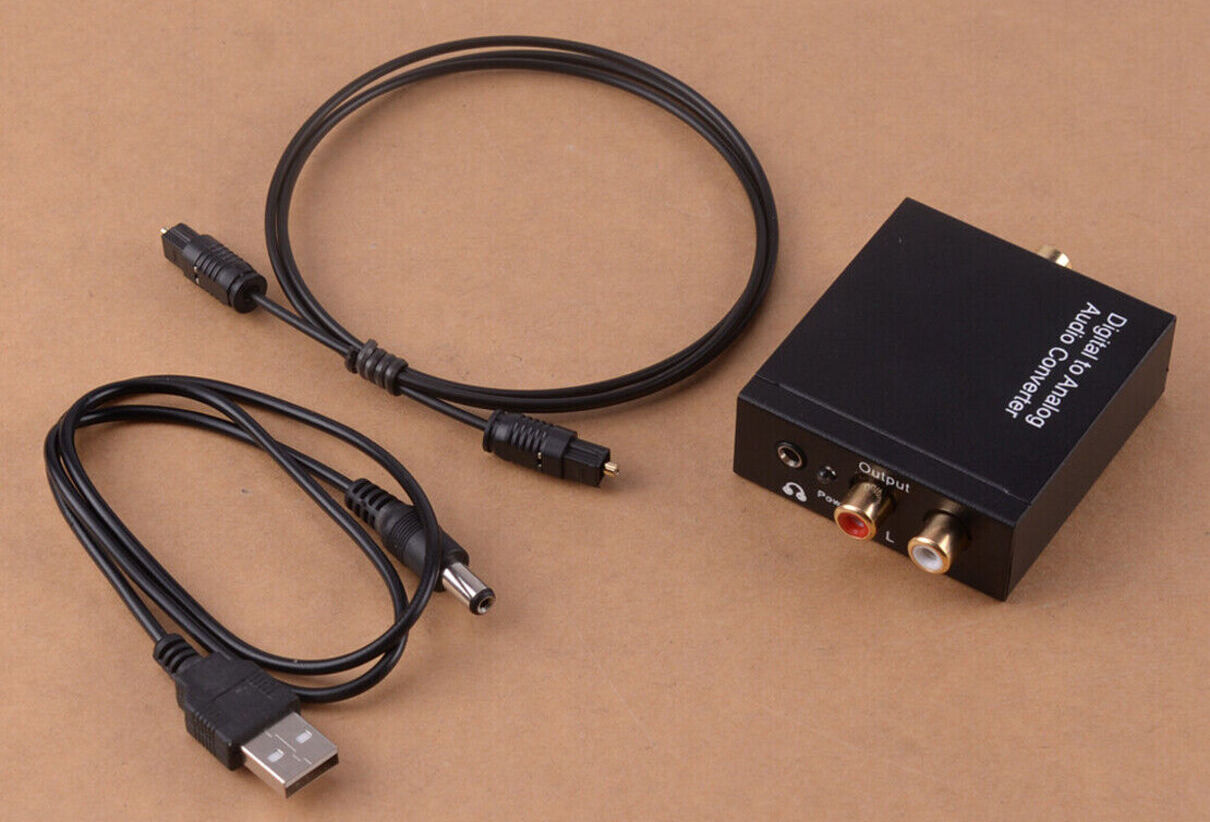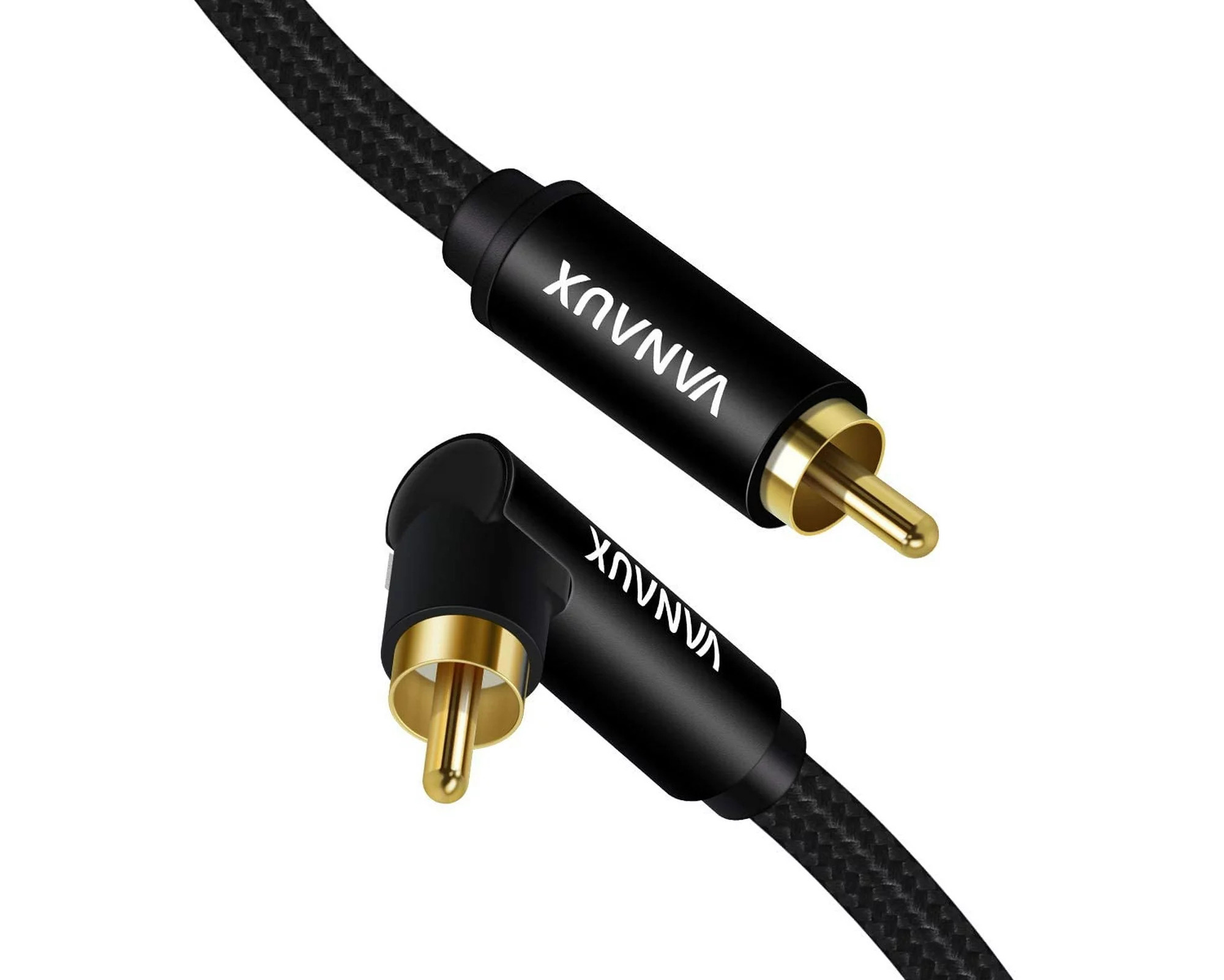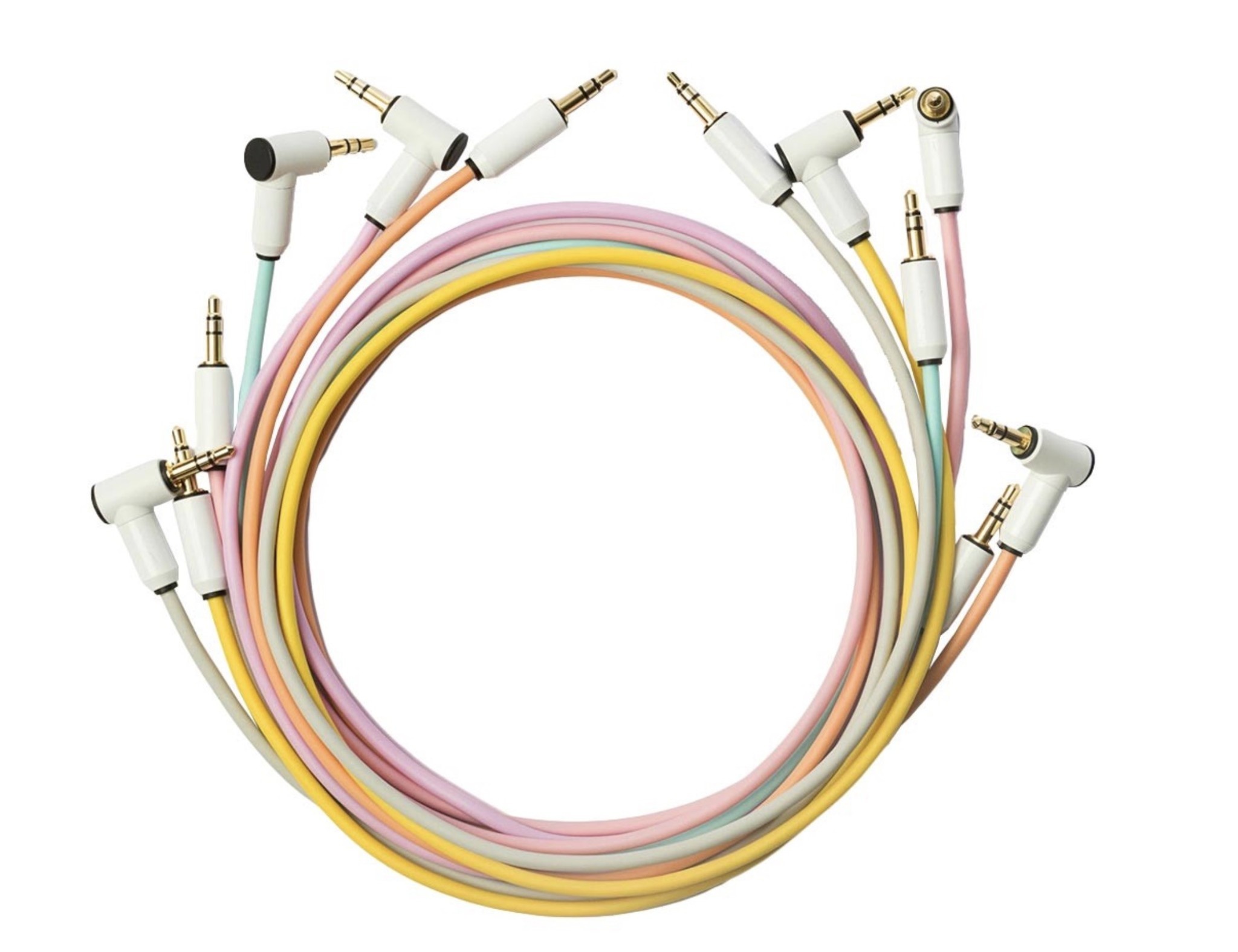Home>Production & Technology>Audio Cable>What Is A Trs Audio Cable
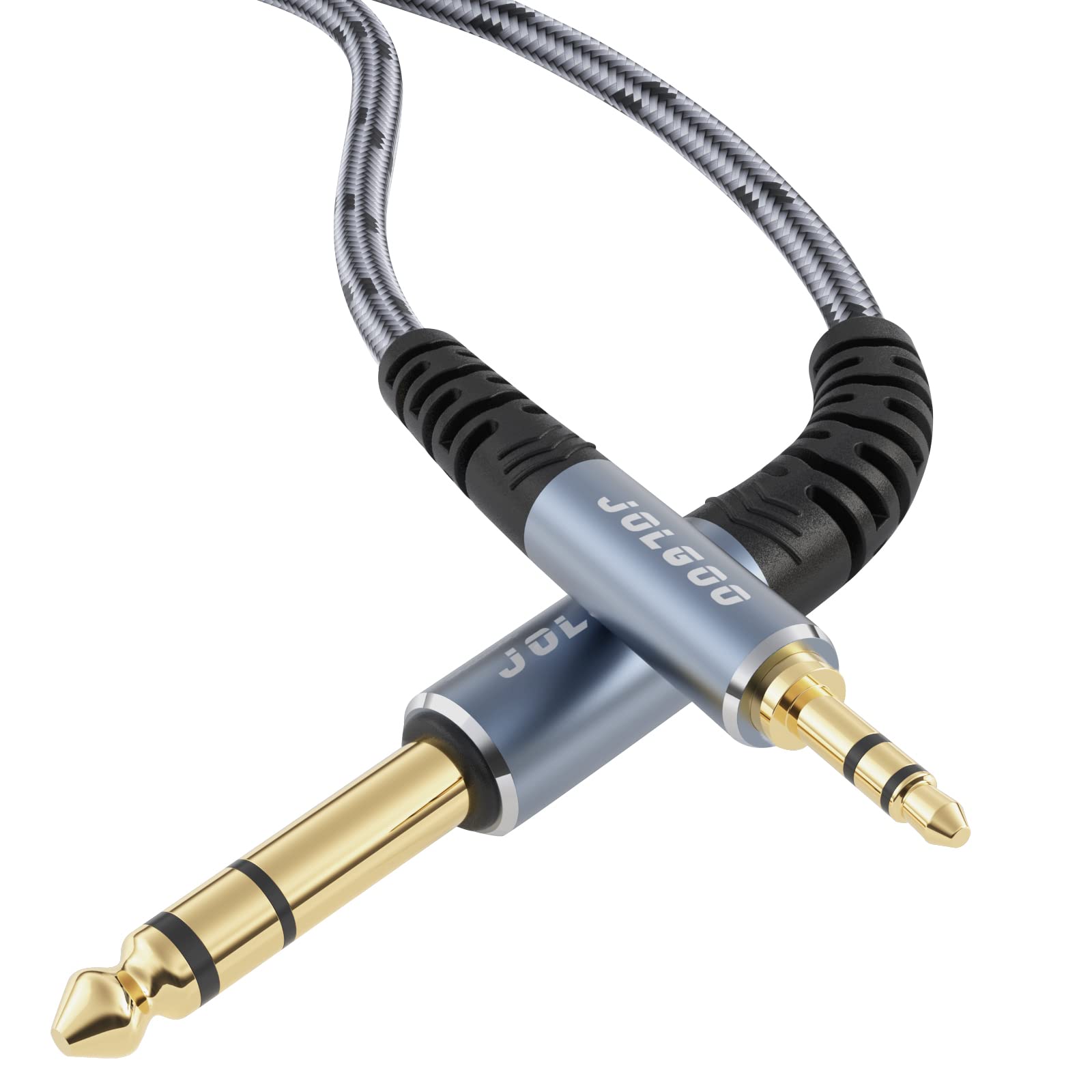

Audio Cable
What Is A Trs Audio Cable
Modified: January 27, 2024
Learn about TRS audio cables and how they are used to transmit audio signals. Find out the benefits of using this versatile type of audio cable for your audio equipment.
(Many of the links in this article redirect to a specific reviewed product. Your purchase of these products through affiliate links helps to generate commission for AudioLover.com, at no extra cost. Learn more)
Table of Contents
Introduction
Welcome to the world of audio cables! Whether you’re a professional musician, audio engineer, or a passionate music lover, understanding the different types of cables is essential for achieving high-quality audio. In this article, we’ll be diving into the world of TRS audio cables, exploring their components, functionality, and common uses.
TRS, short for Tip-Ring-Sleeve, is a type of audio cable that is widely used in various audio applications. It is a versatile cable that can carry both balanced and unbalanced signals, making it popular in both professional and consumer setups. From connecting instruments to audio interfaces, mixers, and headphones, TRS cables play a crucial role in transmitting audio signals with clarity and minimal interference.
As audio technology continues to advance, it’s important to stay informed about the equipment you use. Knowing the ins and outs of TRS cables will not only help you make informed buying decisions but will also ensure the optimum performance of your audio setup.
In the following sections, we’ll explore the components of a TRS audio cable, how it works, its common uses, and the key differences between TRS and other audio cables. We’ll also provide some useful tips for using TRS cables effectively. So, let’s jump in and unravel the world of TRS audio cables!
What is a TRS audio cable?
A TRS audio cable is a type of cable commonly used in audio applications to transmit analog audio signals. TRS stands for Tip-Ring-Sleeve, which refers to the three different sections of the connector. The tip is the end section of the connector, the ring is the middle section, and the sleeve is the long, narrow part at the base.
TRs audio cables have multiple conductors within the cable, allowing them to carry both mono and stereo signals. They are known for their versatility and can carry either balanced or unbalanced signals, depending on the specific application.
The design of a TRS audio cable allows for the transmission of two independent audio signals or a combination of both. This can be particularly useful in scenarios where you need to connect audio devices that require separate left and right channels.
TRS audio cables come in different sizes, with the most common being 1/4 inch (6.35mm) and 3.5mm (1/8 inch). The 1/4 inch TRS connectors are typically used in professional audio setups, such as connecting electric guitars or studio monitors. On the other hand, the 3.5mm TRS connectors are commonly found in consumer electronics, like smartphones, laptops, and portable audio devices.
One important distinction to note is that TRS cables are different from TS (Tip-Sleeve) cables. While both types have a similar design with two conductors, TRS cables have an additional ring that allows for the transmission of stereo or balanced signals. TS cables, on the other hand, are primarily used for mono, unbalanced signals.
Now that we have a basic understanding of what a TRS audio cable is, let’s explore its components and how it works in the next section.
Components of a TRS audio cable
A TRS audio cable consists of three main components: the cable, the connector, and the wiring inside the cable.
The cable itself is typically made up of multiple conductors, usually copper or another highly conductive material. The number of conductors inside the cable depends on whether it is a mono or stereo TRS cable. Mono TRS cables have two conductors, while stereo TRS cables have three conductors.
The connector is the part of the cable that plugs into an audio device. It has three sections: the tip, the ring, and the sleeve. These sections are designed to match the corresponding sections of the audio jack on the device. The tip of the connector carries the left audio channel for stereo signals, or the single audio channel for mono signals. The ring carries the right audio channel for stereo signals, while the sleeve acts as the ground connection.
The wiring inside the cable determines how the conductors are connected to the different sections of the connector. In a mono TRS cable, one conductor is connected to the tip and the other conductor is connected to the sleeve. This configuration allows for the transmission of a single audio channel. In a stereo TRS cable, there are typically three conductors. One conductor is connected to the tip for the left audio channel, another conductor is connected to the ring for the right audio channel, and the third conductor is connected to the sleeve as the ground connection.
It’s worth noting that the wiring configuration can vary depending on the specific application or manufacturer. Some TRS cables may have different color codes to indicate the assignment of each conductor.
Overall, the components of a TRS audio cable work together to provide a reliable and high-quality connection for transmitting audio signals. In the next section, we’ll explore how a TRS audio cable functions.
How does a TRS audio cable work?
A TRS audio cable works by transmitting analog audio signals from one audio device to another. It achieves this through the use of its components and wiring configuration.
When you connect a TRS audio cable between two devices, the tip section of the connector carries the audio signal for the left channel (in stereo applications) or the single audio channel (in mono applications). The ring section of the connector carries the audio signal for the right channel (in stereo applications). The sleeve section of the connector acts as the ground connection, ensuring a stable reference point for the audio signals.
For balanced audio applications, which provide better noise rejection and interference immunity, two of the conductors inside the cable are used for carrying the audio signals, while the third conductor is still used as the ground connection. This balanced configuration helps in canceling out any induced noise or interference along the cable’s length, resulting in cleaner and more accurate audio reproduction.
When an audio signal is sent through a TRS cable, the conductors inside the cable carry the electrical impulses representing the audio waveform. These impulses are then transmitted through the corresponding sections of the connector and received by the connected device. The device uses its internal audio circuitry to process and convert these electrical impulses back into audible sound waves.
It’s important to note that the functionality of a TRS audio cable is not limited to just transmitting audio signals. TRS cables can also be used in combination with other audio cables, such as insert cables or adapters, to perform additional functions like sending and receiving control signals, connecting external effects processors, or facilitating the use of stereo headphones.
Overall, a TRS audio cable works by establishing a reliable and efficient connection between audio devices, ensuring the accurate transmission of audio signals. In the next section, we’ll explore the common uses of TRS audio cables.
Common uses of TRS audio cables
TRS audio cables have a wide range of applications in various audio setups, both professional and consumer. Here are some common uses of TRS audio cables:
- Connecting instruments: TRS cables are commonly used to connect musical instruments like electric guitars, keyboards, and synthesizers to audio interfaces, amplifiers, or mixers. They allow for the transmission of the instrument’s audio signal with clarity and without interference.
- Studio monitoring: In professional recording studios, TRS cables are often used to connect studio monitors or speakers to audio interfaces or mixing consoles. This ensures accurate monitoring of the recorded audio during the mixing and mastering process.
- Headphone connections: Many audio devices, such as smartphones, laptops, and audio interfaces, have a 3.5mm TRS headphone jack. TRS cables with a 3.5mm connector are commonly used to connect headphones or earphones for private listening.
- Audio equipment connections: TRS cables are used to connect various audio equipment together, such as mixers, preamps, audio interfaces, and effects processors. They provide a reliable and high-quality connection for transmitting audio signals between these devices.
- Insert connections: In audio recording and mixing, TRS cables are often used for insert connections. These connections allow for the insertion of external effects processors, such as compressors or EQs, into the audio signal chain, providing enhanced control and sound manipulation.
- Interconnectivity: TRS cables can also be used to connect audio devices that require separate left and right audio channels, such as stereo synths, CD players, or DJ mixers. The stereo TRS cable enables the transmission of independent audio signals for each channel.
These are just a few examples of the common uses of TRS audio cables, but their versatility extends to many other audio applications. Whether you’re a musician, audio engineer, or simply enjoy high-quality audio, TRS cables play a vital role in ensuring accurate and reliable signal transmission.
Next, let’s explore the key differences between TRS and other types of audio cables.
Difference between TRS and other audio cables
While TRS audio cables may look similar to other audio cables, there are some key differences that set them apart. Let’s examine the main differences between TRS cables and other commonly used audio cables:
- TRS vs. TS: One of the main differences is the number of conductors. TRS cables have three conductors (tip, ring, and sleeve), while TS cables have only two (tip and sleeve). The additional ring in TRS cables allows for the transmission of stereo or balanced signals, whereas TS cables are primarily used for mono, unbalanced signals.
- TRS vs. RCA: RCA cables, also known as phono cables, are typically used for consumer audio applications, such as connecting DVD players, gaming consoles, or home theater systems. Unlike TRS cables, which can carry both balanced and unbalanced signals, RCA cables are typically used for unbalanced signals only.
- TRS vs. XLR: XLR cables are commonly used in professional audio setups, particularly in live sound, recording studios, and sound reinforcement systems. XLR cables are known for their balanced connections, which provide improved noise rejection and interference immunity. TRS cables, on the other hand, can carry both balanced and unbalanced signals.
- TRS vs. USB: USB cables are used to connect various audio devices to computers or other USB-enabled devices. USB cables are specifically designed for digital audio transmission and provide power and data communication in addition to audio signals. TRS cables, on the other hand, are analog audio cables.
Another important consideration is the type of connector used with the cables. Each type of cable usually has its unique connector design to match specific devices or audio jacks. For example, TRS cables commonly have 1/4 inch (6.35mm) or 3.5mm (1/8 inch) connectors, while XLR cables have XLR connectors and RCA cables have RCA connectors.
Understanding these differences is crucial in selecting the appropriate cable for your specific audio needs. It’s important to match the cable type and connector to the audio devices you are connecting to ensure compatibility and optimal performance.
Now that we have explored the differences between TRS and other audio cables, let’s move on to some tips for using TRS audio cables effectively.
Tips for using TRS audio cables
Using TRS audio cables effectively can help ensure optimal audio performance and longevity of your equipment. Here are some helpful tips to keep in mind:
- Choose the right cable: Make sure to select the appropriate TRS cable for your specific audio setup. Consider the length, connector size (1/4 inch or 3.5mm), and the type of audio signals you need to transmit (balanced or unbalanced).
- Check the connectors: Inspect the connectors before connecting them to your devices. Ensure they are clean and free from any debris or oxidation to maintain a solid connection and prevent signal loss or noise interference.
- Avoid excessive bending or twisting: While TRS cables are durably built, excessive bending or twisting can damage the internal wiring or connectors. Handle the cables with care and avoid unnecessary strain.
- Secure connections: When connecting TRS cables, make sure they are firmly plugged into the audio jacks. Loose connections can result in intermittent audio or signal loss. Additionally, be gentle when unplugging the cables to avoid damaging the connectors or devices.
- Manage cable lengths: Excessively long cables can introduce signal degradation, so try to use the shortest cable length necessary for your setup. If you need to run longer distances, consider using balanced TRS cables or signal boosters to maintain the audio quality.
- Keep cables away from power sources: To minimize the risk of electromagnetic interference, keep TRS cables away from power cables, power supplies, or any other source of significant electrical currents.
- Label and organize cables: If you have multiple TRS cables in your audio setup, labeling them or using color-coded cable ties can help you easily identify and manage them, reducing confusion and time spent tracing cables.
- Regularly inspect and clean: Periodically inspect your TRS cables for any signs of wear, such as frayed insulation or loose connectors. Clean the connectors with an electrical contact cleaner if necessary.
By following these tips, you can ensure reliable signal transmission and maintain the longevity of your TRS cables and audio equipment.
Now that we have covered the tips, let’s conclude the article and summarize the key points we discussed.
Conclusion
TRS audio cables are a fundamental part of audio setups, offering versatility, reliability, and high-quality signal transmission. Whether you’re a professional musician, audio engineer, or an avid music lover, understanding the components and functionality of TRS cables is essential for achieving optimal audio performance.
In this article, we learned that TRS stands for Tip-Ring-Sleeve, referring to the three sections of the connector. We explored the components of a TRS cable, including the cable itself, the connector, and the internal wiring. We also discussed how a TRS cable works by transmitting analog audio signals through the various sections of the connector.
Furthermore, we identified some common uses of TRS audio cables, such as connecting instruments, studio monitoring, headphone connections, and interconnecting audio equipment. We also compared TRS cables to other audio cables, highlighting their differences in terms of conductor configuration, application, and connector types.
To ensure effective use of TRS cables, we provided some valuable tips, including choosing the right cable, checking and securing the connectors, avoiding excessive bending or twisting, managing cable lengths, and keeping cables away from power sources.
By following these recommendations, you can enhance signal integrity, prevent signal loss or interference, and maintain the longevity of your TRS cables and audio devices.
In conclusion, TRS audio cables are indispensable tools for transmitting analog audio signals in various audio setups. With their versatility and reliability, TRS cables enable seamless connectivity and optimal audio performance. Now armed with a deeper understanding of TRS cables, you can confidently integrate them into your audio setup and enjoy exceptional sound quality.

